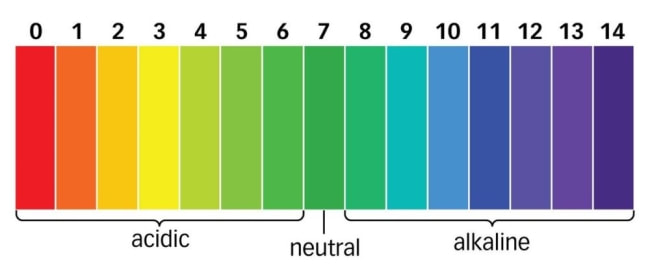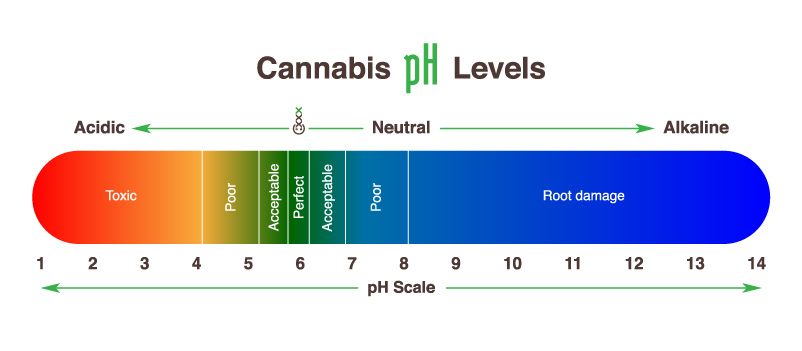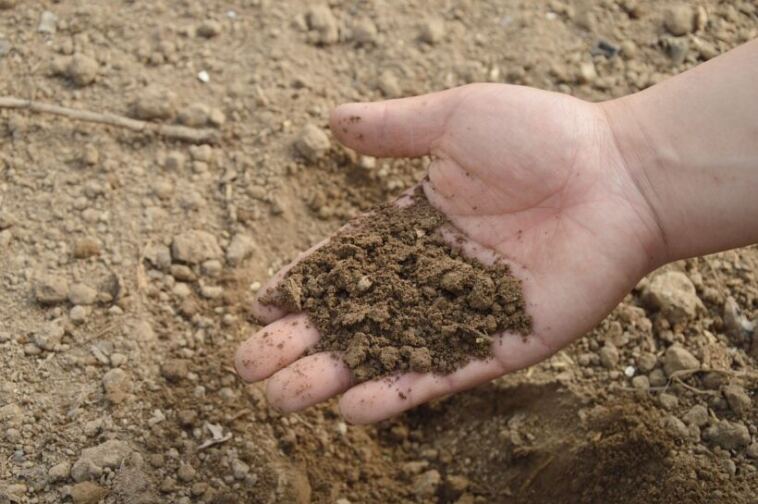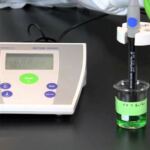- Like
- SHARE
- Digg
- Del
- Tumblr
- VKontakte
- Flattr
- Buffer
- Love This
- Save
- Odnoklassniki
- Meneame
- Blogger
- Amazon
- Yahoo Mail
- Gmail
- AOL
- Newsvine
- HackerNews
- Evernote
- MySpace
- Mail.ru
- Viadeo
- Line
- Comments
- Yummly
- SMS
- Viber
- Telegram
- JOIN
- Skype
- Facebook Messenger
- Kakao
- LiveJournal
- Yammer
- Edgar
- Fintel
- Mix
- Instapaper
- Copy Link
Unlocking the full potential of your cannabis plants starts at the root level!”
Introduction
In the intricate dance of cannabis cultivation, every detail counts, and it often starts with something as fundamental as pH levels. Just as a maestro ensures every note is played to perfection, optimizing the pH for your cannabis plants can be the difference between a good yield and a great one. Delving deeper into this crucial aspect not only unveils the science behind successful growth but also the art of nurturing a plant to its fullest potential. Join us as we explore the nuances of pH optimization and its pivotal role in the symphony of cannabis cultivation.
What Does the pH Level Actually Mean?
pH stands for “potential of hydrogen.” It is a measure of the acidity or alkalinity of a solution, ranging from 0 to 14. A pH of 7 is considered neutral, values below 7 are acidic, and those above 7 are alkaline. The pH scale is logarithmic, which means that each whole pH value below 7 is ten times more acidic than the next higher value. Conversely, each whole pH value above 7 is ten times more alkaline than the one below it.

How Does pH Affect Plant Growth?
The pH level of the growing medium, whether it’s soil or a hydroponic solution, directly impacts a plant’s ability to take up nutrients. Certain nutrients are more available at acidic pH levels, while others are more available in alkaline conditions. If the pH is too high or too low, plants may show signs of nutrient deficiencies, even if those nutrients are present in the soil or solution. This is because the pH affects the solubility of minerals and nutrients, making them more or less available to the plant. When it comes to cannabis soil pH levels, it’s just as crucial as any other plant for it to grow optimally.
Why Is pH Important When Growing Cannabis?
Cannabis, like all plants, requires specific nutrients to thrive. The availability of these nutrients is heavily influenced by the pH level of the growing medium. If the pH is off, cannabis plants can suffer from nutrient deficiencies or toxicities, even if you’re feeding them the right amount of nutrients. This can lead to stunted growth, yellowing leaves, and reduced yields. By maintaining the optimal pH, growers can ensure their cannabis plants have access to all the essential nutrients they need to produce robust growth and high-quality buds.
How Do I Test and Adjust Soil pH Levels?
Testing the pH of your growing medium is crucial. There are several methods available, from simple pH test strips to advanced digital pH meters. Once you’ve determined the pH, you can take steps to adjust it if necessary.
How to Adjust pH When Growing Cannabis
Using pH Down:
If your soil or solution is too alkaline, you can use a product called pH Down to lower it. These products typically contain phosphoric acid, citric acid, or sulfuric acid. It’s essential to add them gradually and test the pH after each addition to avoid overshooting your target pH.
Using pH Up:
Conversely, if your growing medium is too acidic, you can use pH Up. These products often contain potassium hydroxide or calcium carbonate. As with pH Down, it’s crucial to add them slowly and test the pH frequently to ensure you don’t raise it too much.
How Do I Measure pH with Drops?
pH drops are a simple and cost-effective way to test pH. To use them, you’ll take a sample of your soil (mixed with distilled water) or your nutrient solution and add a few drops of the pH indicator. The sample will change color based on its pH. You can then compare this color to a provided chart to determine the pH level.
How Do I Measure pH with a Digital pH Meter?
Digital pH meters offer a more accurate and precise way to measure pH. To use one, you’ll first need to calibrate it using calibration solutions with known pH values. Once calibrated, you can insert the meter’s probe into your soil sample or nutrient solution to get a digital pH reading. It’s essential to clean and recalibrate your meter regularly to ensure accurate readings.

The Benefits of Maintaining the Perfect pH
Ensuring your growing medium is at the optimal pH level has numerous benefits. It ensures your cannabis plants can absorb all the essential nutrients they need, leading to healthier plants, faster growth, and higher yields. It also reduces the risk of nutrient deficiencies or toxicities, which can harm your plants and reduce the quality of your buds.
- Optimal Nutrient Uptake: Ensures that plants can absorb all the essential nutrients they need from the soil or solution.
- Healthier Plants: Plants grown in the correct pH range tend to be healthier, more robust, and more resistant to diseases and pests.
- Higher Yields: Proper pH levels can lead to increased yields as plants can grow to their full potential.
- Prevention of Nutrient Lockout: Ensures that nutrients are not chemically bound in the soil or solution, making them unavailable to plants.
- Better Soil Structure: In soil-based systems, the right pH can promote a better soil structure, improving aeration and root growth.
- Supports Beneficial Microorganisms: In soil-based growing, the correct pH fosters a healthy microbial community, which aids in nutrient breakdown and availability.
- Prevention of Toxicities: Maintaining the right pH prevents certain nutrients from becoming overly available, which can lead to toxicities.
- Cost-Efficient: Reduces the need for excessive fertilizers or pH-adjusting products, saving growers money in the long run.
- Improved Flavor and Potency: For crops like cannabis, the correct pH can lead to better flavor profiles and increased potency of the buds.
- Consistent Growth: Ensures that plants grow consistently without unexpected stunts or growth spurts due to pH fluctuations.
The Problem With pH Imbalances
A pH imbalance, whether too high or too low, can lock out essential nutrients, leading to deficiencies. This can manifest in various ways, from yellowing or browning leaves to stunted growth. In severe cases, a pH imbalance can even kill your plants. Regularly monitoring and adjusting your pH can prevent these issues and ensure your cannabis plants remain healthy.
The major problems with pH imbalances include:
- Nutrient lockout
- Stunted plant growth
- Yellowing or browning of leaves
- Root damage or rot
- Reduced yields
- Increased susceptibility to diseases and pests
- Altered soil microbial activity
- Difficulty in nutrient absorption
- Potential for toxicities due to nutrient buildup
- Inconsistent plant development and growth patterns.
Understanding and Preventing Nutrient Lockout
Nutrient lockout occurs when the pH of your growing medium prevents plants from absorbing certain nutrients. This can happen even if those nutrients are present in the soil or solution. Understanding the optimal pH ranges for nutrient uptake can help prevent lockout. For instance, nutrients like phosphorus, potassium, and magnesium are best absorbed in slightly acidic conditions. Regularly testing and adjusting your pH can prevent nutrient lockout and ensure your plants get all the nutrients they need.
To prevent nutrient lockout, it’s imperative to adhere to the following:
- Regularly test soil or solution pH
- Use quality, balanced fertilizers
- Avoid over-fertilizing
- Ensure proper water drainage
- Calibrate pH meters frequently
- Flush soil or system periodically
- Monitor water quality
- Use organic matter or compost in soil
- Rotate crops or plants
- Avoid mixing incompatible nutrients.
The Best pH for Growing Cannabis
The optimal pH for growing cannabis varies based on the medium. For soil, it’s typically between 6.0 and 7.0. For hydroponics or soilless mediums, it’s slightly more acidic, usually between 5.5 and 6.5. It’s essential to regularly test and adjust your pH to stay within these ranges.

Hydroponics and Soilless pH Range
In hydroponic and soilless growing systems, the absence of natural buffers found in soil means pH can fluctuate more rapidly. This makes regular pH monitoring even more crucial. As mentioned, the optimal pH range for these systems is slightly more acidic, between 5.5 and 6.5. Maintaining this pH range ensures optimal nutrient uptake and healthy cannabis plants.
The Science Behind pH and Nutrient Uptake
Every plant has a specific pH range where it thrives, and cannabis is no exception. At the molecular level, the pH affects the form and availability of ions in the soil or solution. These ions are essentially the building blocks of the nutrients plants need. When the pH is too high or too low, certain ions become less available, leading to nutrient deficiencies.
For instance, at a highly acidic pH, elements like calcium and magnesium become less available, while elements like iron and manganese can become overly available, leading to toxicities. Conversely, at a highly alkaline pH, elements like phosphorus, iron, and manganese become less available.
The Role of Microorganisms in pH Management
In soil-based growing systems, beneficial microorganisms play a crucial role in maintaining pH balance. These microbes break down organic matter, releasing nutrients in a form that plants can absorb. They also produce organic acids that can help buffer the soil pH. By fostering a healthy microbial community in your soil, you can naturally help regulate pH and improve nutrient availability.
The Challenges of pH Management in Different Growing Systems
While soil provides some natural buffering against pH fluctuations, hydroponic and soilless systems don’t have this advantage. This means that in these systems, pH can change rapidly, especially when adding nutrients or adjusting water quality. It’s essential to monitor pH closely in hydroponic systems and be prepared to adjust it frequently.
The Importance of Calibration in pH Measurement
Whether you’re using pH drops or a digital pH meter, calibration is crucial. Over time, the chemicals in pH drops can degrade, leading to less accurate readings. Similarly, the electrodes in digital pH meters can become coated or damaged, affecting their accuracy. Regular calibration ensures that you’re getting accurate readings, allowing you to adjust pH effectively.
The Impact of Water Quality on pH
The type of water you use in your growing system can significantly impact pH. Tap water often contains minerals that can raise or lower pH. Additionally, if you’re using water from a well or natural source, it may contain organic matter or other contaminants that can affect pH. It’s essential to test your water source and consider using a water filter or treatment system if necessary.
The Future of pH Management in Cannabis Cultivation
As the cannabis industry continues to grow, so does the technology and knowledge surrounding pH management. New products and methods are continually being developed to make pH management easier and more effective. From advanced digital pH meters with wireless connectivity to pH-adjusting products that work automatically, the future of pH management in cannabis cultivation looks bright.
FAQ: Optimizing pH for Cannabis Cultivation
Q: What is pH, and why is it important for cannabis cultivation?
A: pH stands for “potential of hydrogen” and measures the acidity or alkalinity of a solution. For cannabis cultivation, maintaining the right pH ensures that plants can absorb essential nutrients effectively, leading to healthier growth and better yields.
Q: What is the ideal pH range for cannabis plants?
A: For soil-based cultivation, the ideal pH range for cannabis is typically between 6.0 to 7.0. For hydroponic systems, it’s slightly more acidic, ranging from 5.5 to 6.5.
Q: How can I test the pH of my soil or solution?
A: There are several methods to test pH, including using pH test strips, liquid pH test kits, or digital pH meters. The choice depends on your preference, budget, and the level of accuracy you desire.
Q: My pH is off-balance. How can I adjust it?
A: You can use pH adjusters, commonly known as “pH Up” or “pH Down,” to raise or lower the pH of your solution. It’s essential to make adjustments gradually and retest to avoid drastic fluctuations.
Q: Can pH imbalances harm my cannabis plants?
A: Yes, pH imbalances can lead to nutrient lockout, where plants can’t absorb essential nutrients. This can result in stunted growth, yellowing leaves, and reduced yields.
Q: How often should I check the pH when growing cannabis?
A: It’s a good practice to check the pH every time you water or feed your plants. Regular monitoring helps catch any potential issues early on.
Q: Are there any natural ways to adjust pH?
A: Yes, lime can be used to raise soil pH, while sulfur can lower it. However, these methods work more slowly than commercial pH adjusters and are typically used for more long-term adjustments.
Q: Does the type of water I use affect pH?
A: Absolutely. Tap water, for instance, can have minerals that affect pH. It’s always a good idea to test the pH of your water source before using it for your plants.
Q: Can I rely solely on pH to ensure the health of my cannabis plants?
A: While pH is crucial, it’s just one aspect of cannabis cultivation. Other factors like lighting, temperature, humidity, and nutrient levels also play significant roles in the health and yield of your plants.
Q: Are there specific pH meters designed for cannabis cultivation?
A: While there are general-purpose pH meters, some are designed with features catering to cannabis growers, such as soil probes or hydroponic solution testers. It’s essential to choose one that fits your specific growing setup.
Conclusion
Understanding and managing pH is crucial for successful cannabis cultivation. Whether you’re growing in soil, hydroponics, or a soilless medium, regularly testing and adjusting your pH can make a significant difference in the health and yield of your plants. By investing in quality pH testing and adjustment products and staying informed about the latest advances in pH management, you can ensure that your cannabis plants have the best possible environment to thrive.


